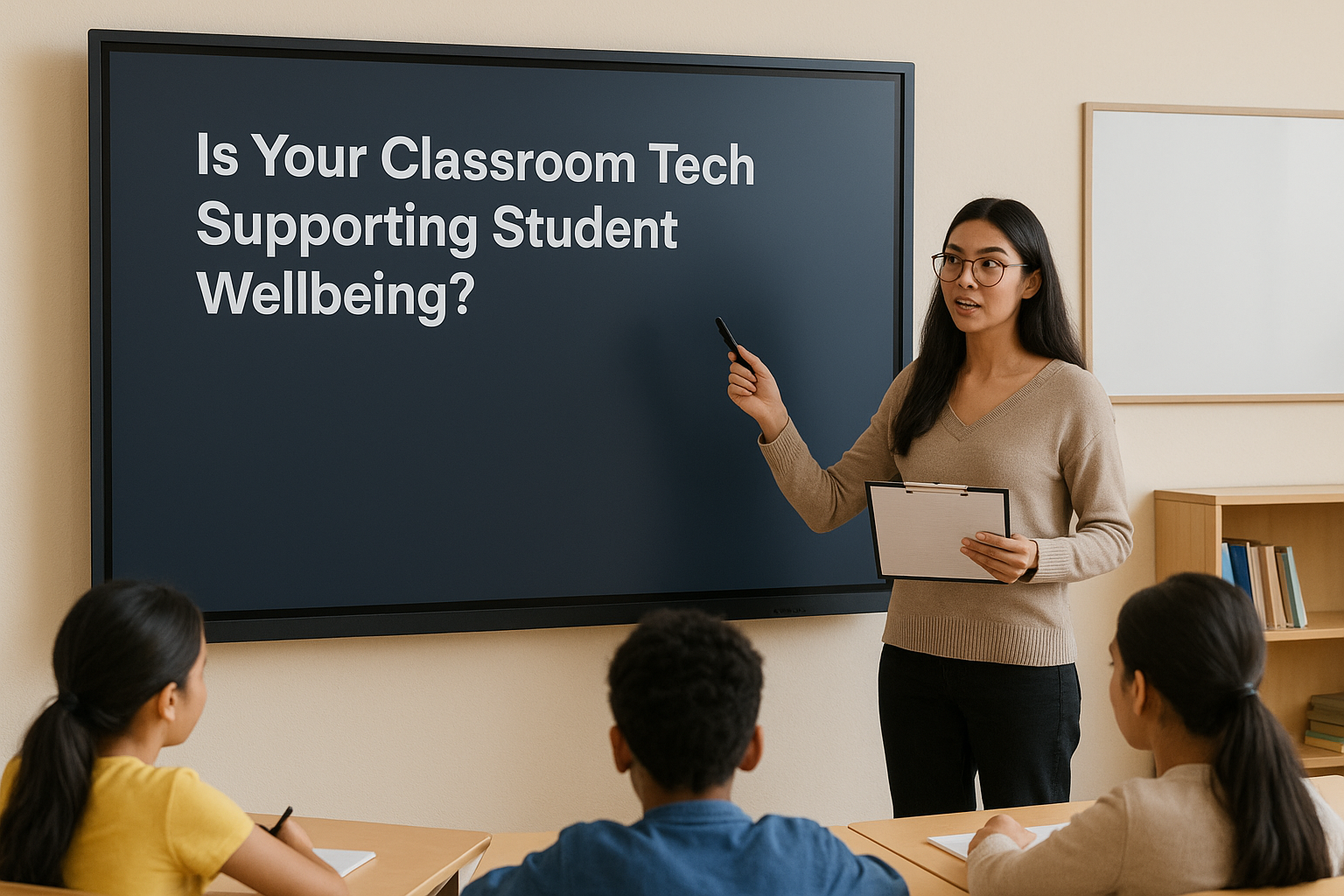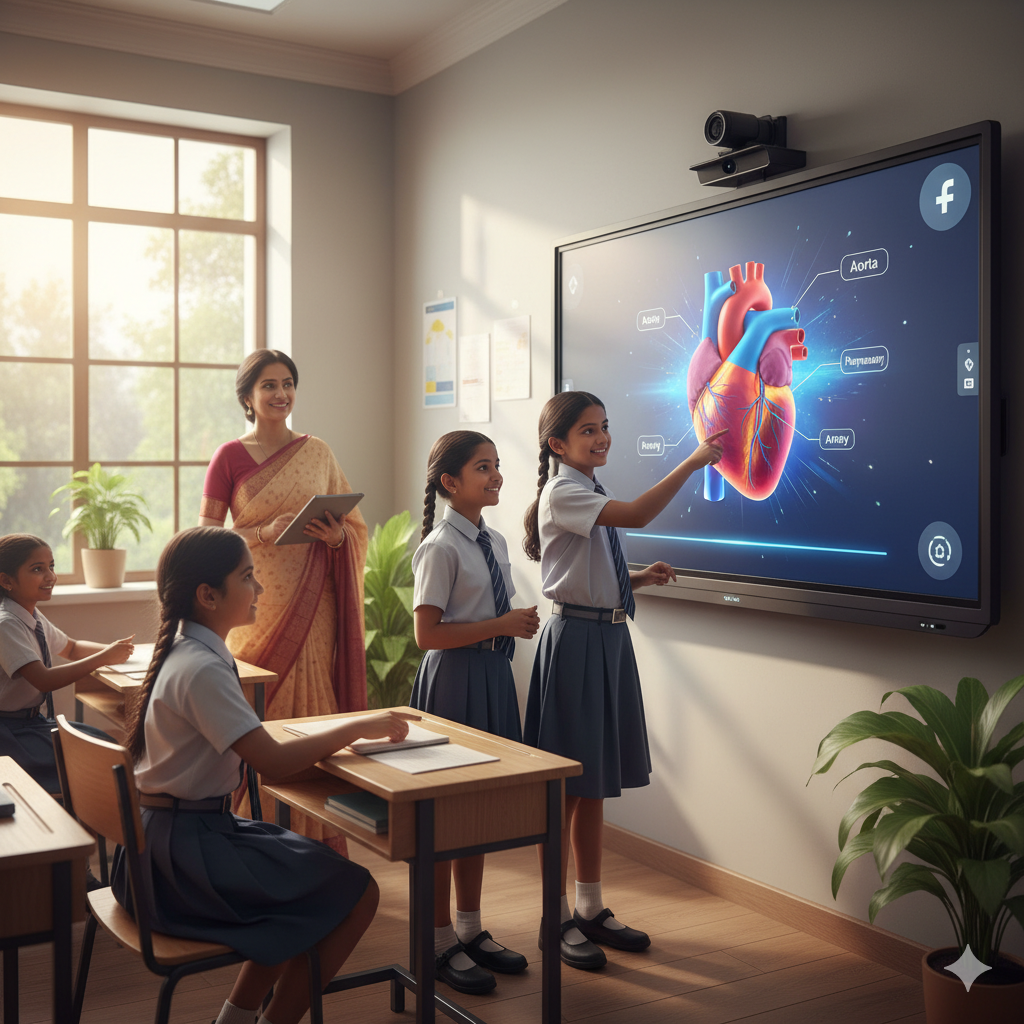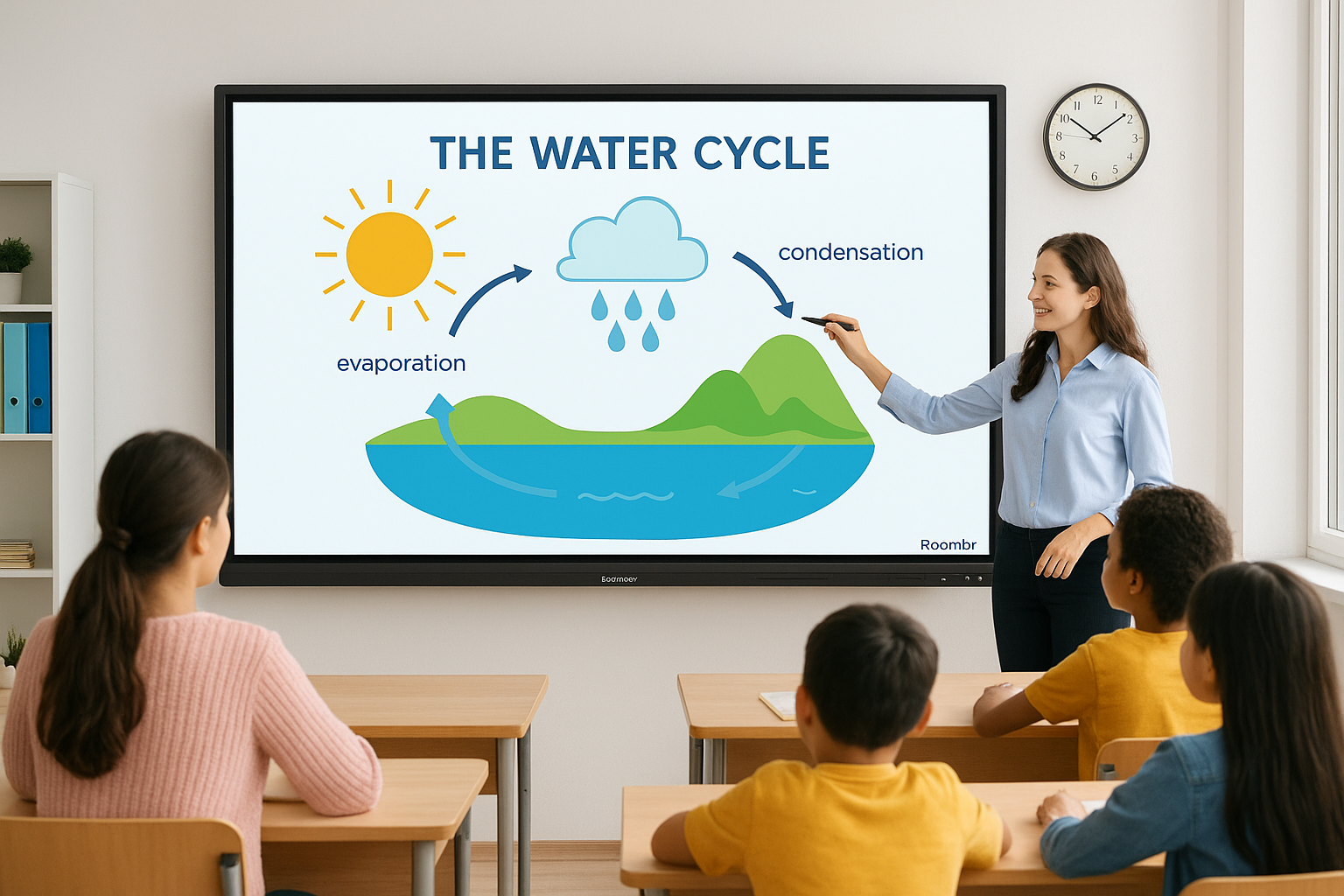10 Tips to Choose the Right Interactive Display for Student Comfort

Teachers notice more than we think. A student leaning forward. Another rubbing their eyes. Restless energy building halfway through the lesson. While it’s easy to chalk these signs up to distraction or disinterest, the root cause may lie elsewhere.
Increasingly, schools across India are embracing interactive displays to enhance classroom learning. But, sometimes, educators overlook that not all displays are designed with student wellbeing in mind. A mismatched screen or poor interface doesn’t just affect learning outcomes, it affects how students feel in the classroom.
If you're evaluating an interactive panel board for classroom or considering an upgrade, here’s a wellbeing-focused checklist to help you choose wisely.
10 Student Wellbeing Factors to Consider When Buying Interactive Displays
1. Is the Display Size Correct for the Room?

Why it matters: Students shouldn’t struggle to see what’s on the screen. If the display is too small, it can cause eye strain and make them lose interest, especially in bigger classrooms.
What to check:
- Class size and room depth vs screen dimensions
- 75-inch interactive display is a minimum for most small-sized Indian classrooms
- Consider projection-based options for wider visibility
Note: Don’t just test it from the front row. Sit at the back and judge it like a student. Find out the ideal interactive flat panel display size for different classrooms to make an informed decision.
2. Does the Display Help Reduce Eye Strain?
Why it matters: Many students today already spend hours staring at screens. The classroom shouldn’t make that worse.
What to check:
- Anti-glare surface or matte screen finish
- Adjustable brightness settings
- Flicker-free and low blue light output
Note: A few Indian schools have switched from glossy interactive panel boards to soft-projection systems because students were reporting frequent headaches during longer sessions.
3. Can Teachers Use It Without Needing Help?
Why it matters: If a teacher has to call support just to mirror their screen or switch to whiteboard mode, class time is lost. Stress builds. Students wait.
What to check:
- Can teachers easily switch between tools without needing help?
- Minimal setup time at the start of class
- Responsive touch or pen tools that feel natural
Note: When technology runs smoothly, the classroom stays more focused and relaxed. State of the art digital classroom solutions such as Roombr are designed with this goal in mind. But whatever brand you choose, make sure your staff can run it confidently from Day 1.
4. Is the Audio Clearly Heard in Every Corner?
Why it matters: In busy classrooms, or those close to roads or construction, poor sound turns lessons into guesswork. Some students quietly tune out because they just can't hear.
What to check:
- Speaker direction (front-facing is best)
- Volume coverage across the room
- Clear audio during videos or screen recordings
Note: In a school in Jaipur, switching to a flat panel with weak internal speakers caused teachers to raise their voices more often, and students missed video cues. Small detail—big outcome.
5. Does It Support Students with Different Learning Needs?
Why it matters: A classroom isn't one-size-fits-all. Students process information differently, and your display should help, not limit, that flexibility.
What to check:
- Zoom or magnify functions
- Colour settings for contrast and readability
- Support for multi-modal learning (visuals, audio, interactivity)
Note: Some interactive displays support multiple users drawing at the same time, which encourages group learning and motion—ideal for younger learners or collaborative tasks.
6. Is It Flexible to Different Seating Layouts?
Why it matters: Classrooms aren’t always perfect rectangles. Displays must remain visible whether the room has benches, clusters, or staggered seating.
What to check:
- Mount height and adjustability
- Projection angle, or size scaling
- Visibility without glare from different angles
Note: A principal in Kerala noted that their fixed interactive display became hard to view once they moved to U-shaped seating. A more flexible system resolved that issue.
7. Does It Fit Your School’s Power and Internet Setup?
Why it matters: Even today, many schools across Tier 2 and Tier 3 cities deal with inconsistent internet or voltage dips. Your display should keep lessons running even without a perfect setup.
What to check:
- Offline access to teaching tools
- Minimal dependence on cloud or wireless input
- Fast restart or resume after power cuts
Note: Some modern systems, including Roombr Digital Classroom, offer cloud sync with offline fallback, so you never lose a recording or session even if the Wi-Fi drops mid-class.
8. Does It Encourage Participation, Not Just Passive Watching?
Why it matters: The more involved students are, the more they retain. An interactive display that’s only used for slides or videos might not tap into full engagement.
What to check:
- Whiteboarding and annotation features
- Ability for students to write, draw, or respond
- Smooth interaction without lag
Note: A teacher reported a sharp increase in attention span after switching to a display that let students solve math problems live on the board. Tech became a tool, not just a screen.
9. Does It Allow Easy Transition Between Screen and Off-Screen Learning?
Why it matters: Not everything needs to be digital. Good tech creates space for screen-free time, not just more content.
What to check:
- Seamless switching between modes (whiteboard to offline activity)
- Timer tools to schedule breaks
- Easy pause function without rebooting
Note: A teacher should be able to pause a video, discuss concepts with students using the whiteboard, and resume without technical delay.
10. Is It Built to Work in a Real Indian Classroom?
Why it matters: Display units need to work in rooms with chalk dust, high humidity, noisy corridors, or uneven walls. If it's fragile or too complex, it won’t last.
What to check:
- Hardware durability
- Minimal cabling and external setup
- Support that doesn’t depend on daily IT help
Note: Some newer AI-powered displays are built plug-and-play, with training sessions under 30 minutes. For schools without tech teams, that simplicity can make all the difference.
Final Thoughts
When a student sits in front of an interactive display, it should feel natural. They should be able to see clearly, listen easily, and feel part of the lesson not left behind. If your current classroom tech doesn’t enable that, it might be time to rethink not just for functionality, but for wellbeing too.
Rethink Student Wellbeing with Smarter Digital Classroom Technology
Roombr turns any wall into a 120–200-inch interactive display, ensuring every student, even in the last row, gets a clear, glare-free view. No bulky panel boards. Just a plug-and-play solution designed for comfort, focus, and inclusive learning.
Roombr doesn’t offer just an interactive display, it’s a holistic, wellbeing-first upgrade for your classrooms. Schedule a free Roombr demo now to experience the difference.
Foziya Abuwala
Share
Step Into the future of
Education with Roombr

















